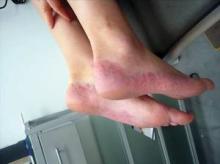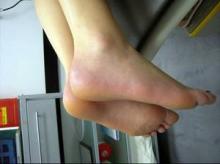SAN FRANCISCO – It falls into a dermatologist's realm of responsibility to help women with psoriasis overcome treatment barriers and improve their psychosocial well-being, according to Dr. Jennifer C. Cather.
Women often are the main caregivers for their families and thus may put their family's health care needs before their own, Dr. Cather noted at a seminar on women's and pediatric dermatology sponsored by Skin Disease Education Foundation. Dermatologists should stress to these patients the importance of making their medical needs a priority.
"I see many women who have gone untreated or undertreated for many years despite being under the care of a dermatologist, or even several other dermatologists, before arriving in our office. It is important for women to make their own health a priority and then to seek out a dermatologist with whom they can frankly discuss the range of therapeutic options and their correlating implications," Dr. Cather said in an interview.
"The reality is that, however complicated it is to treat psoriasis, the complications of not treating the disease can often be much worse," said Dr. Cather, medical director at Modern Dermatology and Modern Research Associates, Dallas.
Although the prevalence of psoriasis is approximately the same by gender, the condition has a greater psychosocial impact on women than on men, multiple surveys have indicated. For example, 20% of women vs. 12% of men reported their psoriasis was a "very large problem in their everyday lives," the National Psoriasis Foundation discovered when they asked 4,725 people from 2004 to 2009 ("Report on the Psycho-Social Impacts of Psoriasis").
In addition, women reported a higher symptom burden than did men. Women were 17% more likely to report itching; 16% more likely to report physical irritation; and 24% more likely to report pain associated with their psoriasis, compared with men, according to the online report.
Other researchers discovered a statistically significant reduction in quality of life for women with psoriasis versus men, based on a survey of 266 psoriasis patients (J. Am. Acad. Dermatol. 2004:51:704-8).
"Wearing a chronic disease on the outside of your body is a real struggle in a society as focused on appearance as ours is," Dr. Cather said. The average age of psoriasis onset is between 15 and 35 years, a time when many women are making important choices about their future. The impact of low self-esteem associated with this condition can have far reaching implications.
Therefore, it is important for dermatologists to take the time to assess the patient's well-being. In addition to measurement of affected body surface area, inflammatory burden, joint involvement, and other medical issues using validated instruments, ask women some simple questions, Dr. Cather said. Examples include: "How is your psoriasis today?" and "Is the cost of your therapy worth it?"
"We need to understand how each patient is experiencing the disease and whether he or she is satisfied with the treatment option we have selected," Dr. Cather said. "Satisfied patients are compliant with the treatment regimen and have a greater chance of success over the long term."
The good news is that systemic medication can make a big difference in the lives of women affected by psoriasis. Tumor necrosis factor (TNF) antagonists are the treatment of choice for Dr. Cather when patients present with psoriasis and psoriatic arthritis. These agents can have a synergistic benefit when given with methotrexate, she said.
Interestingly, women with higher body mass index tend to respond better to monoclonal antibody treatments, Dr. Cather said. Also, keep in mind that psoriasis treatment needs may change for a particular woman throughout her life.
Dr. Cather presented several cases of women who responded well to systemic therapy. These included a young teenage girl whose plaques cleared following treatment with etanercept; and an older teenage girl – treated previously with adalimumab, efalizumab, and cyclosporine A – who responded to two injections of ustekinumab 45 mg. She also presented the case of a 55-year-old woman previously prescribed methotrexate and etanercept. The patient’s subsequent treatment with adalimumab has been "life changing"; her psoriasis has been clear since 2003.
Begin with a thorough physical examination, including a total body skin evaluation, and medical history, Dr. Cather said. Physical exam also can include a Pap smear, mammogram, and colonoscopy. Ask women about their history of malignancy, infections, and vaccinations. Inquire about their social history as well, she recommended.



